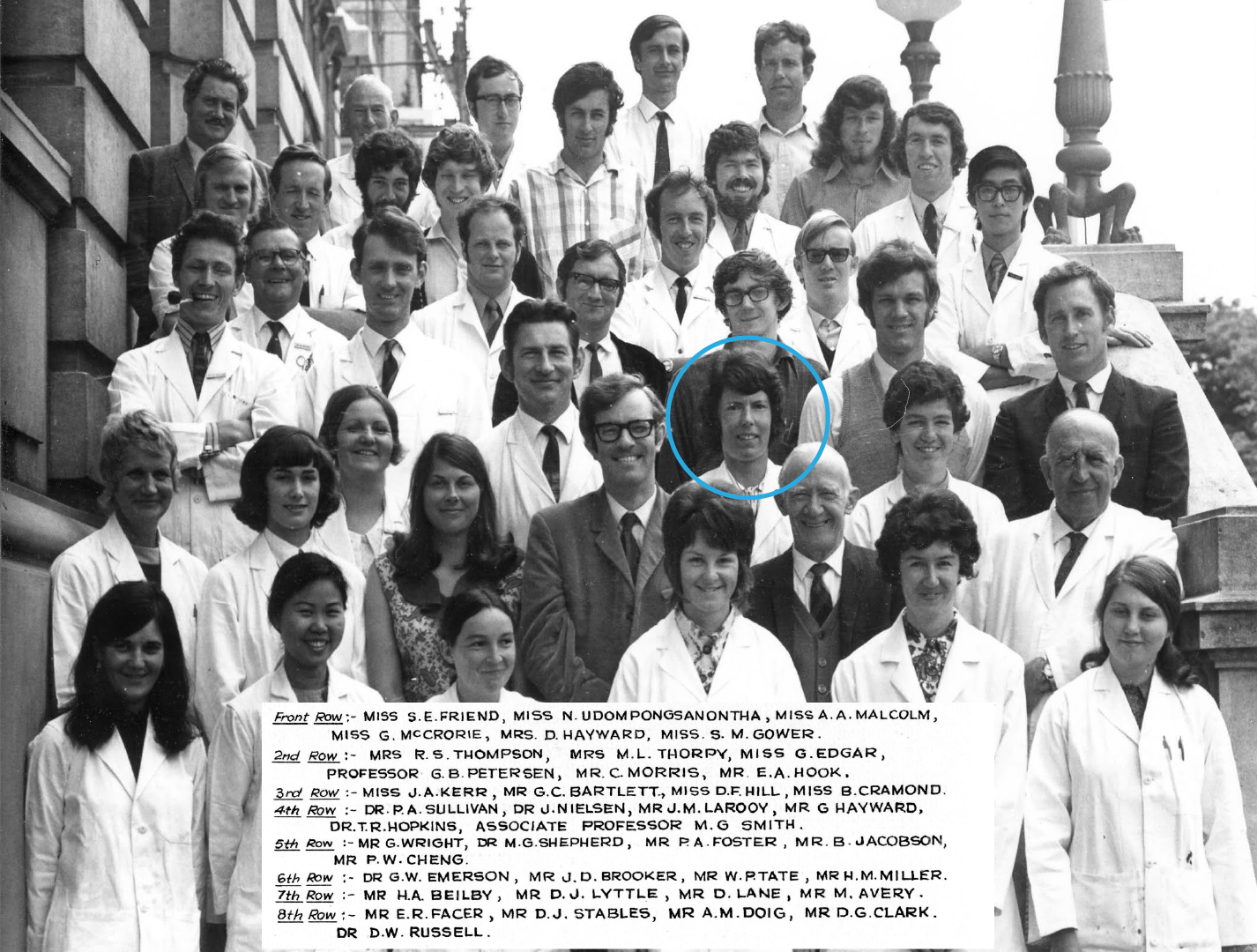
The Otago Department of Biochemistry in 1971, early in Professor Diana Hill’s scientific career. Diana is circled in blue.
The Department of Biochemistry bids farewell to one of our pioneering scientists, Professor Diana Hill, who passed away earlier this month in Whangarei at the age of 81.
Diana played a key role in introducing DNA sequencing technologies to New Zealand research. She also established the AgResearch Molecular Biology Unit, initiated a biotech enterprise and served as a government science advisor. She was the first woman professor appointed in the Department of Biochemistry and one of its first research professors. Her research team's work on the genetics of animal production earned a Silver Medal from the Royal Society Te Apārangi in 1996, and she was elected a Fellow of the Royal Society in 1997.
Diana came to the University of Otago in the late 1960s after a successful nursing career to pursue a new life direction in science. During her Stage 3 Biochemistry year, her then lab demonstrator Warren Tate (now Emeritus Professor), noted Diana’s superb organisational and technical skills. Warren suggested to his PhD supervisor, the late Emeritus Professor George Petersen, that Diana might be ideal as a researcher in his team. That began a very close long-standing research relationship between them, during which Diana played a pivotal role in George bringing new DNA sequencing technologies into New Zealand in the 1970s.
When restriction nucleases (DNA cutting enzymes) and their utility were discovered, Diana was busy in the laboratory isolating and purifying them for the research group’s use in their DNA work. She was instrumental in organising a highly successful hands-on workshop aimed at spreading the new DNA sequencing technologies across Australasia.
Diana and George then worked with Nobel laureate Fred Sanger in the pioneering sequencing of the complete lambda bacteriophage DNA genome of in 1982 (48,502 base pairs long – see Sanger, Coulson, Hong, Hill & Petersen J Mol Biol 162, 729-773). Diana earned her PhD from such research work before going on to lead her own research initiatives.
Former colleagues remember her as “a bit controversial at times, but certainly a mover and shaker”. We are grateful for her bravery and audacity, as a role model for women in science, and also as a leader in pioneering new scientific technologies and opportunities.